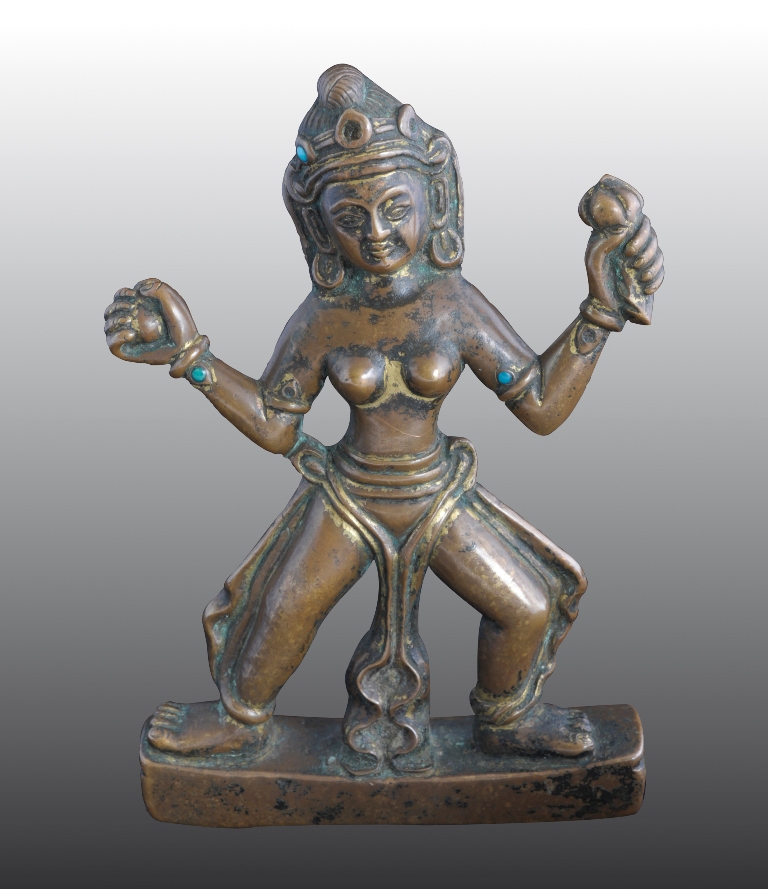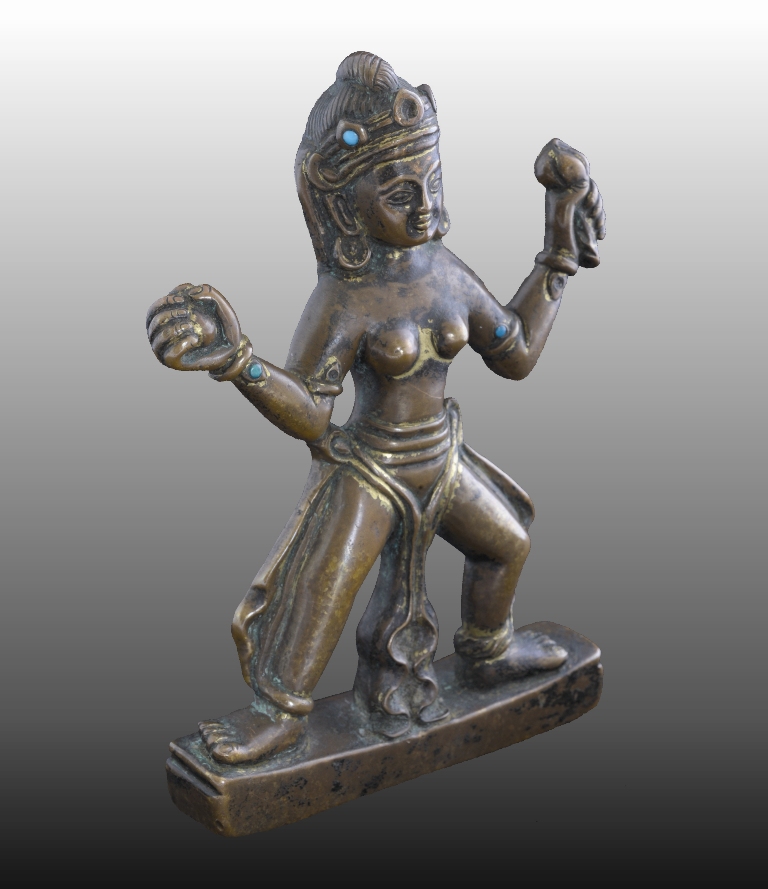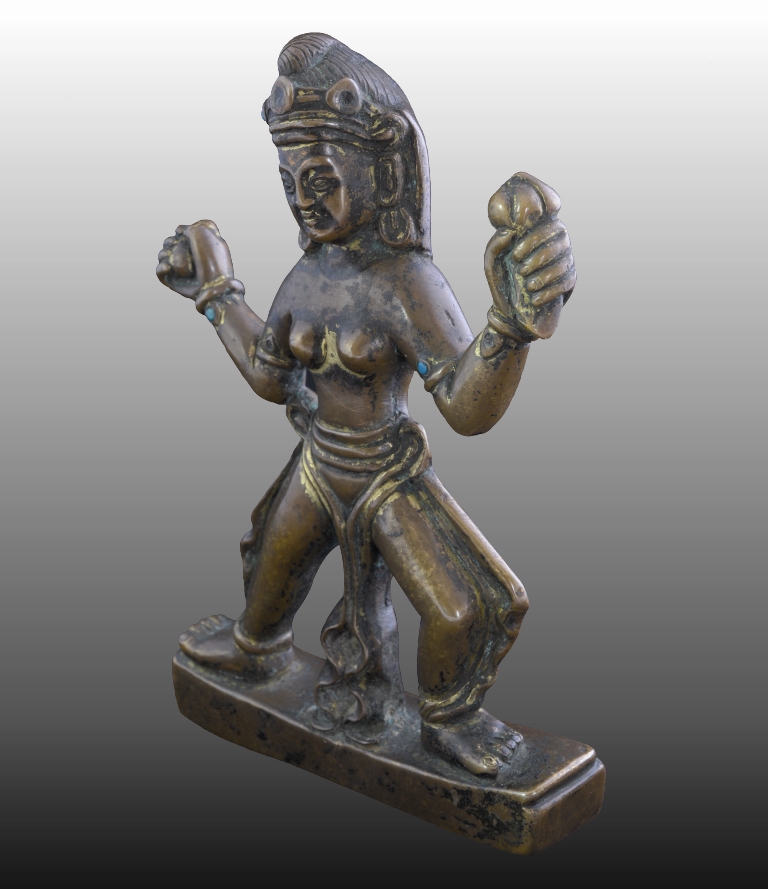Dâkinî (Khandroma)Nepal - Bronze with traces of gilding and turquoise - Height 15.5 cm - 10th-11th century
The etymology of the Sanskrit term dâkinî, and of the Tibetan equivalent “khandro-ma” (mkha’-’gro-ma), indicates the ability to fly with which female figures like this one are endowed. Hindu in origin, dâkinîs and dâkas—their male counterparts—are a group of minor gods belonging to the retinue of the goddess Kâlî, living in charnel grounds and cemeteries and feeding on rotting human flesh.1 Migrating to a Buddhist environment, these deities preserved their macabre aspect and took the role of protective deities and partners of the Ishtadevatâs, highly important tutelary gods with whom they are often shown in sexual union. As wisdom beings, the dâkinîs were always worshipped, and particularly in the late phase of Indian Buddhism they came to be identified with women, later deified, who frequented cemeteries and other macabre places in which they practised forms of Tantric yoga and esoteric rituals with the aim of transcending any duality and dichotomy between pleasant and unpleasant, frightening and reassuring, between self and non-self. Some of these dâkinîs are celebrated for transmitting their teachings to famous Tantric masters, as for instance the Indian guru Nâropa (1016-1100), whose name is directly connected to that of Nâro Dâkinî,2 one of the best known divinities in this category.
(1] Erberto Lo Bue, Tesori del Tibet. Oggetti d’arte dai monasteri di Lhasa, La Rinascente, Milano 1994, p. 43. (2] Ibid. p. 145. ALC (Free Circulation)
|


